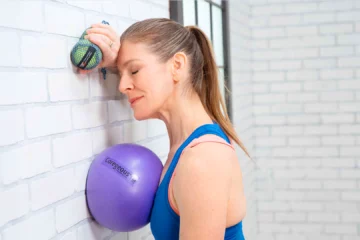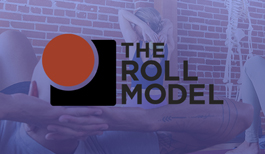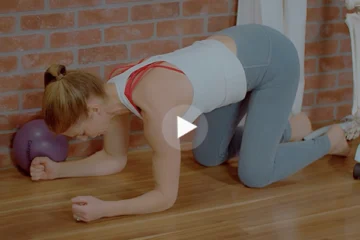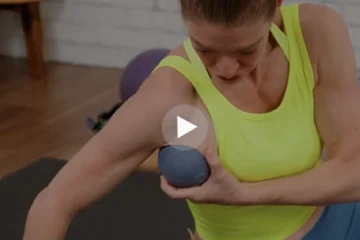
As discussed last week in last week’s blog, international aid and development workers work in some of the most challenging contexts globally. They are vulnerable to burnout, compassion fatigue and vicarious trauma, which also similarly can affect a wide array of other professions, including police, emergency room personnel, fire fighters, EMTs, shelter staff, social workers, teachers, legal professions, journalists, etc. The nature of some of these professions, combined with one’s life choices, can result in living life in a continually up-regulated state of sympathetic dominance, or the “fight or flight” nervous system.
The stress response has been shown to have a similar effect on the brain as trauma and hence practices like interoceptive based yoga, mindfulness, breath, meditation and gratitude practices can be essential part of cultivating resilience. By building one’s own resources they can better meet their environment, and weather the peaks and valleys of life with more presence and connection to one’s true self and state of being.
As an aid worker living overseas for many years, I had to develop my own self-care program given the limited availability to access services like yoga and meditation classes or psychosocial care. A key tool I started with was meditation and mindfulness practices, which can be done anywhere. Sound crazy? We can be mindful in all our day to day activities, even washing dishes, and we can do moving meditations or sitting meditations, it’s even become so popular that we have apps to guide us in meditation.
Getting in Touch With Your Vagus Nerve
Another cornerstone to my toolbox is yoga nidra, or “yogic sleep.” Some yoga nidra programs mention that 30 minutes of yoga nidra is equivalent to 4 hours of sleep in terms of brain activity, other say 20 minutes is equivalent to 1 hour, but what is the science behind it? New studies in Copenhagen using brain scans and electroencephalograph (EEG) show that nidra practices increase theta activity, which can improve our intuition and creativity, and it activates different parts of the brain related to emotional, visual and tacticle processing, as well as one’s sense of self.
Such areas are often negatively affected by the continual up-regulation of the nervous system which can have unintended impacts over time on our neural pathways. These impacts often feed a cycle of stress, disrupting not only one’s emotional state, but also our immune system, our ability to function in the work place and maintain inter-personal relationships. The result over time can be a narrower window of tolerance and weaker vagal tone.
Hence as a person who is often upregulated, another key tool in my toolbox is stimulating the Vagus nerve to downregulate, and strengthening vagal tone. The vagus nerve is not only the longest nerve in the body but it also has one of the most important jobs – it’s the main implementer for the parasympathetic system, or our ‘rest and digest’ system. It innervates the heart and regulates many of the body’s internal organ systems, most of which operate at a subconscious level like digestion, glands, heart, lungs, etc.
There are many ways to stimulate the vagus nerve, but one of the more effective ways is to target the stomach where there is the largest body of nerve endings. This can be done by laying on the stomach with a rolled-up blanket or using another implement, such as the Coregous ball, starting with small increments of time and building up from there. Other great ways to stimulate the nerve can be though the ocular endings with eye movements or using an app, or activating the nerve endings in the shoulder – which can be done very easily with an ALPHA ball against a column or an original Yoga Tune Up® Therapy Ball on a block.

Meditation and Restoration
Compassion and empathy fatigue, which affect many in caregiving professions, is something that gratitude practices, like Loving Kindness Meditation (LKM) can support – hence it is yet another tool in my box of goodies! Simple gratitude practices, like making lists each day or each week, can be an easy way to start integrating positive attention to what is working well in life. Those who have tried LKM often feel the effects of it, but the science behind why it works demonstrates how these practices produce impacts in the brain which can combat burnout, empathy/compassion fatigue, and stress.
Steven Richardson’s research demonstrated that LKM practices can activate the insula and the temporal parietal juncture (TBJ) areas which process empathy, make us cognizant of our emotional and physical present-moment experiences as well as attune to emotional states of others. Another study by Barbara Fredrickon found that LKM practiced over a 9-week period demonstrated the immense impact that LKM can have on changing a person’s sense of life experience. Her study found that LKM practices allowed one to experience a wider range of positive emotions, such as hope, pride, amusement, love, gratitude, and this in turn produced personal resources, such as feeling social support, increased mindfulness or purpose in life, and in turn led to incremental increases in life satisfaction.[1]
So, if all this research is out there, why not make sure you have a 30-minute guided yoga nidra practice, a 5 minutes Coregous practice and a 7-minute loving kindness meditation handy on your phone? My best advice is: create a self-care plan with time bound goals, consider what activities or exercises bring you back into equilibrium, remembering that sometimes you may have to up-regulate to do so, and consult the self-care wheel to help you define self-care goals in all facets of your life.
[1] Fredrickson BL, Cohn MA, Coffey KA, Pek J, Finkel SM. Open Hearts Build Lives: Positive Emotions, Induced Through Loving-Kindness Meditation, Build Consequential Personal Resources. Journal of personality and social psychology. 2008;95(5):1045-1062. doi:10.1037/a0013262.
Liked this article? Read Change Your Breath, Change Your Health in an Instant












One of the most common problems caregivers face is burnout. This burnout can easily lead to more serious problems, such as anxiety and depression. That is why you need to know when you are getting signs of depression and anxiety because of your job. This article
Caregiver Stress and Burnout: Signs and Prevention
will tackle the signs and prevention of caregiver burnout. Hope this will help. Thank you.
Thank you for this, and for your brave work. The studio where I teach was founded by a firefighter. We have first responder discounts and a good number of people use them. I’ve observed that they love the physical practice but often resist meditation — at first. Asana is a great way to introduce these folks to down-regulation.
This was very helpful info on self care and how to activate the vagus nerve. As a yoga teacher i try to always keep my energy in balance but it can be chalkenging. Teaching requires giving a lot of loving energy, not to mention all the driving and an irregular time schedule each day. Making sure i maintain my yoga practice and selfcare is essential on a daily basis. Thank you.
Speaking from experience from someone with a military background, a clinical healthcare background, and now work in the mental health field, you need to create your own self- care system. Mine includes the Roll Model Method, meditation, relaxation therapy, and a good therapist. Many people have primary and secondary post- traumatic stress as a result of the encounters we have on a regular basis. It is absolutely imperative to have multiple tools in your toolbox if you are in these fields, or with any high stress jobs. Thanks for the post.
As a nurse who works in the field of neuroscience, I found this article to be incredibly interesting. I had no idea that the vagus nerve is so affected by constant upregulation, and that we must work to stimulate it in order to regulate our parasympathetic nervous system. I never thought of rolling the stomach as a way to stimulate the vagus nerve. As so
I work as a nurse in a very fast-paced setting, so I am always upregulated and in “fight or flight” mode. I find it difficult to pull focus to my parasympathetic nervous system after a long day of work, leading to a constant state of stress, sleep difficulties, and a compromised immune system. Thank you for sharing this information and for suggesting accessible ways to incorporate yoga nidra practice, coregous practice and meditation into your self care. I will definitely begin to incorporate these practices into my self care, and share them with my partner who works overseas in Africa and is in need of strategies that are portable and accessible.
A beautifully written and expressed post on the importance of taking care of yourself first so that you can fully take care of others. Good for everybody, and especially vital for aid workers, first responders, and the wide range of related professions whose work keeps them in a highly upregulatd state much of the time. You offer excellent tools, and back them up with science and research. Thanks, Samara!
I appreciated your discussion of the vagus nerve and how to work with the corgeous ball on the many nerve endings in the stomach. I have recently pulled out the corgeous ball and this will be added incentive to practice! I also didn’t know that occular eye movements also help to stimulate the vagus nerve. It would be useful to know what those movements are. Having seriously committed to practicing mindfulness based stress reduction (MBSR) for the past couple of years, I have seen many positive changes in my life — from reduced stress, to improved digestion, as well as positive life changes and deepening relationships. I would also highly recommend the book on trauma “The Body Keeps the Score” by Bessel Van der Kolk.
I was just recently introduced to the practice of yoga nidra, and already see the benefits that a short daily practice can provide. I have many friends who work as nurses in busy hospitals during late night hours, and after reading this post, I feel even more compelled to share these techniques with them. I’m constantly hearing phrases like “The Emergency Room is a mad house right now!” so I’m sure guided meditations at the fingertips will help them maintain healthier stress levels.
This is such a wonderful article, and I thank you for sharing. I appreciate how you mention that this type of stress/trauma can often be experienced by hospital workers or caretakers, whose nervous system is often unregulated since helping others is part of their daily routine. You provide effective strategies for self-care practices that have some science behind the benefits of practicing yoga nidra, therapy balls, and loving kindness meditation.
Such great tools for this population doing important work! I appreciate the inclusion of science and research to back up the techniques. Loving Kindness Meditation is a powerful practice for anybody.
Thank you for giving voice to this topic! Chronic stress can send quite a similar chemical cocktail to trauma. Constant high levels of cortisol can reek havoc on the body and, in time, can even become addictive. Being on daily high alert or regularly responding from a state of fight or flight becomes can become the new “norm.” Meditation and yoga can truly be some of the most effective ways to disrupt a corrupted system. A Type A, high performing, high strung person might need to discharge movement and physical energy before he/she can sit for longer periods of time, but, I do wholeheartedly agree: yoga nidra, meditation, and yoga can be life changing tools for those that have known trauma, chronic stress, disease, injury, and many more cortisol-spiking scenarios.
A good,reminder that we,need to knead our stomach more when we use the YTU balls and good point on the ocular muscles which dont get exercised often. Thanks!
Samara, this is a great article for helping anyone downregulate when overwhelmed and overstimulated. I appreciate the many tools you shared: the lovingkindness meditation, the coregeous ball to settle the vagus nerve and increase vagal tone to initiate the parasympathetic nervous system, and the eye movements to stimulate the upper ends of the vagus nerve. Thank you.
Very interesting Samara, just got a coregeous ball, your article motivates me to use it more regularly, as I have been a social worker for over 15 years. This job is also what brought me to yoga 10 years ago. THanks!
Thank you for your article Samara. It is so interesting how body works and learning about the Vagus Nerve is completely new for me. I love lists and I made greate experieces with all kind of lists, just to let mind flow and look down on the written words and can think about it in a completely different way… like YTU is… 🙂
What a very informative article, especially about the Vagus Nerve being targeted through the stomach with the Coregous ball.
Thank you!
Wow, that’s amazing! I had no idea that the vagus was so linked with the stomach, nor that a coregeous ball could be used there to create downregulation for the whole system!
This article was super informative and linked a few missing pieces for me! I am familiar with the vagus nerve and have practiced yoga nidra many times. It was nice to see the science behind yoga nidra and it’s relationship to the vagus nerve. It’s no wonder I felt a boost in creativity after yoga nidra sessions and a sense of calmness in working on the corgeous ball. This is an article I’m defiantly going to share with my mother who is struggling with rheumatoid a arthritis as I think this would be super informative for her and the practices could really make a difference in her emotional struggle and joint stress. Thank you.
I really appreciated this blog, with all the references, the noting of the vagus nerve (and how to strengthen it) and the accessibility of organizing one’s selfcare into really managable time-bound moments that can be slipped into life. Your article really is good for everyone – I was in a mindfulness class recently with teachers who are in classrooms every day all day with children. They need to be there 100% of the time and engaged. Having a set of tune-up balls in the car to use after school before going to pick up their own kids, or a mindfulness practice to listen to on their phone were a couple of ways they added self-care and mindfulness to their lives.
Thank you for this! I spent several years teaching at a residential treatment facility for adolescent offenders and my body was in chronic fight or flight. I wish I had known then about stimulating the vagus nerve. I currently work with a couple of ER nurses and I can’t wait to try it with them!
I am not an aid worker, but this speaks to my constant anxiety and insomnia. I listen to yoga Nidra every night before bed. I discovered LKM about two years ago, but now want to study LKM more in-depth and add it to my daily routine. I will now add rolling on my Coregeous ball (to stimulate my vagus nerve) to my evening routine.
Does anyone here in the YTU world have a favorite Yoga Nidra to recommend?
Great article Samara!
I treat quite a bit of firefighters in my clinic and see the impact there job has on their overall health in many ways. Having to go from a relaxed parasympathetic state, even at sleep, to an alarm inducing sympathetic one I believe is one of the biggest if not THE biggest contributor to the ailments and injuries I see. I will start to suggest these practices much more. Thank you!
Absolutely, first responders go through so much stress throughout their days that it’s important for them to be self aware of their two brains (mind health and gut health).
Wonderful post Samara! This information rings true on so many levels for me. I have spent a significant amount of time overseas as an aid worker myself through numerous projects as well as have worked in very stressful programs at home in the Unites States. It seems as though throughout the globe the “givers” seems to forget about or brush aside one key individual, themselves. I see not only the amazing human beings that have devoted their lives to the less fortunate lack a self care routine which ultimately leads to burn out but also it seems this is the trend in every day society throughout the globe, living continually up-regulated state of sympathetic dominance. I have family members who experience high blood pressure, anxiety, depression on a regular basis. I have heard breath work, big belly Lumbar Thoracic breath stimulate the vagus nerve, but never have I actually thought about rolling to build up the strength and conditioning of this region. Yoga Nidra Great post. I look forward to more.
Wonderful post Samara! This information rings true on so many levels for me. I have spent a significant amount of time overseas as an aid worker myself through numerous projects as well as have worked in very stressful programs at home in the Unites States. It seems as though throughout the globe the “givers” seems to forget about or brush aside one key individual, themselves. I see not only the amazing human beings that have devoted their lives to the less fortunate lack a self care routine which ultimately leads to burn out but also it seems this is the trend in every day society throughout the globe, living continually up-regulated state of sympathetic dominance. I have family members who experience high blood pressure, anxiety, depression on a regular basis. I have heard breath work, big belly Lumbar Thoracic breath stimulate the vagus nerve, but never have I actually thought about rolling to build up the strength and conditioning of this region. Great post. I look forward to more.
Oh boy. This is the subject I personally am working on the most. I hadn’t become familiar with yoga nidra sleep. I need to. Also.. you put together this puzzle for me. I have had a life of trauma, born with depression, suicidal tendencies at age of 8, raped at 14, first child at 16 and I was being locked away and abused. Escaped that to enter film school, met another man after awhile. Ended up being a different kind of abusive relationship for much longer. I was literally feeling myself die. I could feel my body saying it couldn’t survive with me anymore. I got out of that and started the more focused journey I’m on now. I’ve since then also been through a miscarriage last year and traumas of needing to do what’s right and where being broke is actually more affordable than finding a low income job. I’ve always felt one with my body and can sense something going wrong right away. Except, I didn’t use it for my emotions. I also have PCOS, my dang eggs turn into painful cysts. I have a lot of nausea everyday and pain and hold so much trauma in my abdomen that what was once my hub of strength, is now this lonely space I am scared to touch or flex. I’ve slowly incorporated the coregeous ball and recently started restorative yoga and inversions with breath to try to reach my nervous system. But I didn’t put together the abdomen to vagus nerve to nervous system connection. I want to cry because I know it’ll will be a path to healing, but a painful emotional one. Thank you for this article.
Thanks for the beautiful article, Samara. I am familiar with the effects and benefits of Yoga Nidra in my own body and I have heard/read about the impact of the Vagus nerve on the stress response, but I have not taken the time to explore this in my own body. I feel totally inspired to research some of your suggestions. I was also interested to learn that the Vagus Nerve is the longest nerve in the body!
Thank you for this great article. As someone who has trouble with both sleep and digestion your suggestion for yoga Nidra, Coregous stimulation and LKM will be noted as something to add for evening self care.
“There are many ways to stimulate the vagus nerve, but one of the more effective ways is to target the stomach where there is the largest body of nerve endings.” I did not know that there were so many nerves in the stomach. That is both surprising and food for thought.
I’ve practiced LKM for a long time, and didn’t know that studies show that it helps attune us to the emotional states of others. I also didn’t realize that yoga nidra increases theta activity in the brain. Very cool to know!